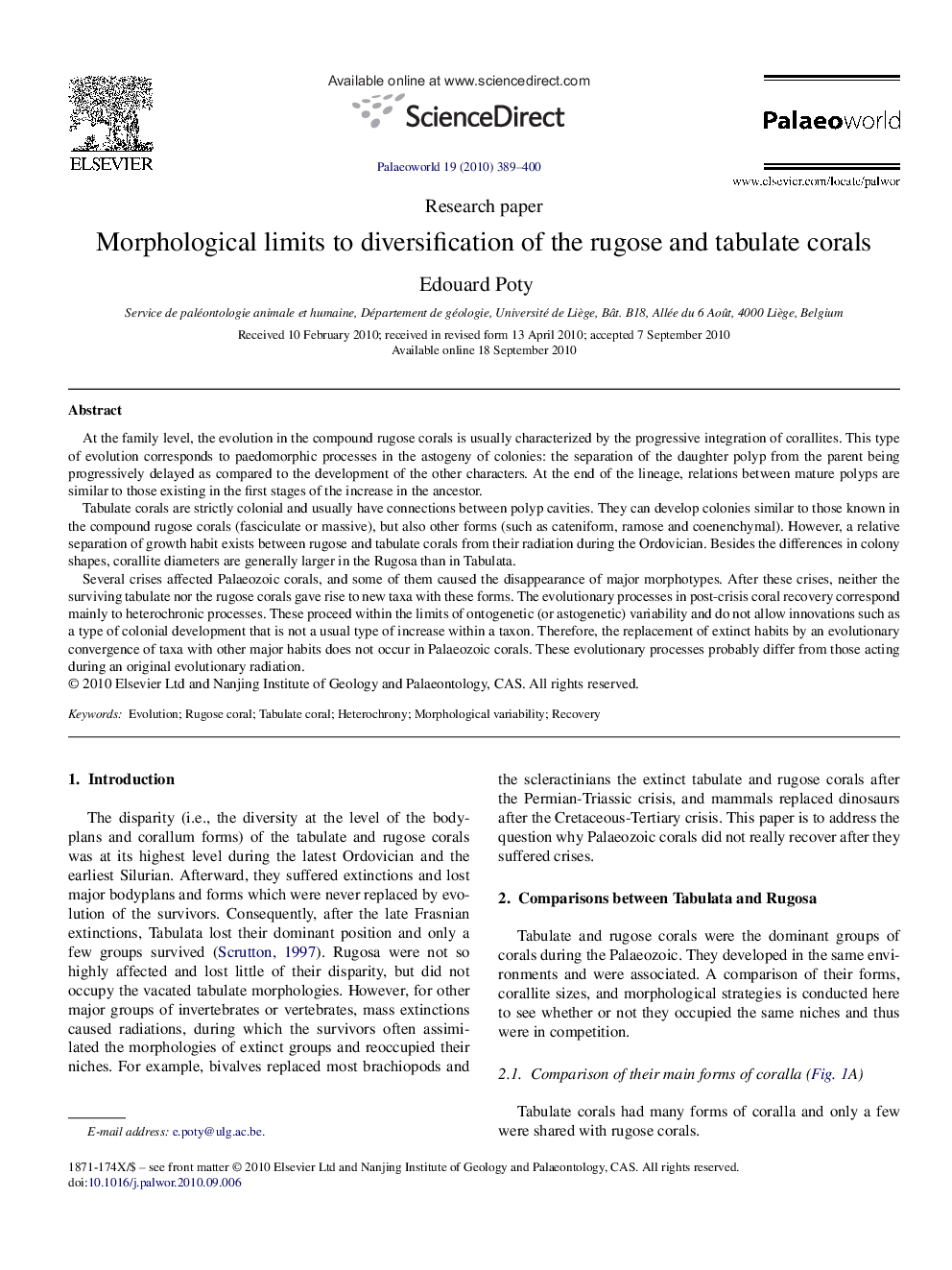| کد مقاله | کد نشریه | سال انتشار | مقاله انگلیسی | نسخه تمام متن |
|---|---|---|---|---|
| 4749837 | 1642282 | 2010 | 12 صفحه PDF | دانلود رایگان |

At the family level, the evolution in the compound rugose corals is usually characterized by the progressive integration of corallites. This type of evolution corresponds to paedomorphic processes in the astogeny of colonies: the separation of the daughter polyp from the parent being progressively delayed as compared to the development of the other characters. At the end of the lineage, relations between mature polyps are similar to those existing in the first stages of the increase in the ancestor.Tabulate corals are strictly colonial and usually have connections between polyp cavities. They can develop colonies similar to those known in the compound rugose corals (fasciculate or massive), but also other forms (such as cateniform, ramose and coenenchymal). However, a relative separation of growth habit exists between rugose and tabulate corals from their radiation during the Ordovician. Besides the differences in colony shapes, corallite diameters are generally larger in the Rugosa than in Tabulata.Several crises affected Palaeozoic corals, and some of them caused the disappearance of major morphotypes. After these crises, neither the surviving tabulate nor the rugose corals gave rise to new taxa with these forms. The evolutionary processes in post-crisis coral recovery correspond mainly to heterochronic processes. These proceed within the limits of ontogenetic (or astogenetic) variability and do not allow innovations such as a type of colonial development that is not a usual type of increase within a taxon. Therefore, the replacement of extinct habits by an evolutionary convergence of taxa with other major habits does not occur in Palaeozoic corals. These evolutionary processes probably differ from those acting during an original evolutionary radiation.
Journal: Palaeoworld - Volume 19, Issues 3–4, December 2010, Pages 389–400